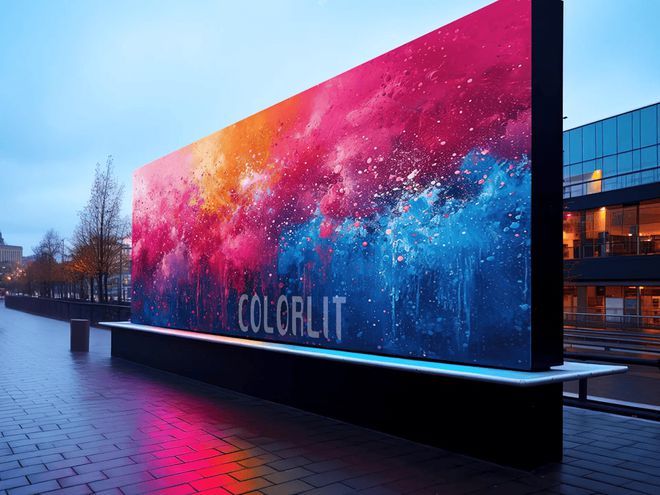LED (Light Emitting Diode) displays have revolutionized the way information is shared and visuals are presented in both personal and professional settings. These high-tech screens are versatile, energy-efficient, and visually striking, making them an ideal choice for various applications. This guide provides a comprehensive overview of LED displays, their types, applications, benefits, and factors to consider when choosing one.
What Are LED Displays?
LED displays are digital screens that use light-emitting diodes to produce images, videos, or text. Unlike traditional LCD displays, LEDs do not require a backlight, as each diode emits its own light. This technology results in brighter visuals, better contrast, and lower energy consumption.
Types of LED Displays
- Indoor LED Displays:
- Designed for indoor environments such as malls, offices, and conference rooms.
- Offer high resolution and brightness suitable for close viewing distances.
- Outdoor LED Displays:
- Built to withstand weather elements like rain, heat, and dust.
- Feature high brightness levels for visibility in sunlight.
- Flexible LED Displays:
- Can be bent or curved to fit creative installations and architectural designs.
- Ideal for retail displays, stage backgrounds, and unique advertising spaces.
- Transparent LED Displays:
- Provide see-through capability while displaying content.
- Commonly used in retail windows and glass facades.
Applications of LED Displays
- Advertising and Marketing:
- Billboards, banners, and retail store displays.
- Events and Entertainment:
- Concerts, sports events, and live broadcasts.
- Corporate Communication:
- Digital signage in offices and presentation displays in boardrooms.
- Education:
- Interactive classroom boards and digital noticeboards.
- Transportation:
- Displaying schedules, announcements, and advertisements in airports, train stations, and bus terminals.
Advantages of LED Displays
- Energy Efficiency:
- LEDs consume less power than traditional display technologies, reducing energy costs.
- High Brightness and Contrast:
- Ensures visibility even in brightly lit environments.
- Durability and Longevity:
- LEDs are robust and have a long lifespan, minimizing maintenance needs.
- Customizability:
- Available in various sizes and configurations, suitable for any space or requirement.
- Dynamic Content:
- Supports videos, animations, and real-time updates for versatile communication.
Factors to Consider When Choosing an LED Display
- Purpose:
- Define the primary use: advertising, presentations, or event visuals.
- Indoor vs. Outdoor:
- Choose the appropriate type based on the installation location.
- Pixel Pitch:
- Determines resolution and viewing distance. Smaller pitch equals higher resolution.
- Brightness:
- Outdoor displays require higher brightness to combat sunlight glare.
- Size and Aspect Ratio:
- Ensure the screen fits the intended space and meets content display requirements.
- Budget:
- Consider the total cost, including installation and maintenance.
Installation and Maintenance
- Installation:
- Requires professional assistance to ensure proper setup and integration.
- Consider mounting options, wiring, and accessibility for future maintenance.
- Maintenance:
- Regular cleaning to prevent dust accumulation.
- Periodic checks for pixel damage or connectivity issues.
Future Trends in LED Displays
- MicroLED Technology:
- Offers higher efficiency and even better image quality.
- Interactive LED Displays:
- Enhancing engagement with touch-sensitive screens.
- Eco-Friendly Solutions:
- Further reducing energy consumption and using sustainable materials.
- Augmented Reality Integration:
- Combining AR with LED displays for immersive experiences.
Conclusion
LED displays have become an integral part of modern communication and advertising. Their versatility, durability, and vibrant visuals make them suitable for a wide range of applications. By understanding the types, advantages, and considerations outlined in this guide, businesses and individuals can make informed decisions to maximize the potential of LED display technology.


More Stories
How to Install Schutts Industrial Heavy Duty Gas Struts Safely
Custom Portals That Streamline Communication and Knowledge Sharing
How Buying YouTube video likes Can Boost Your Business